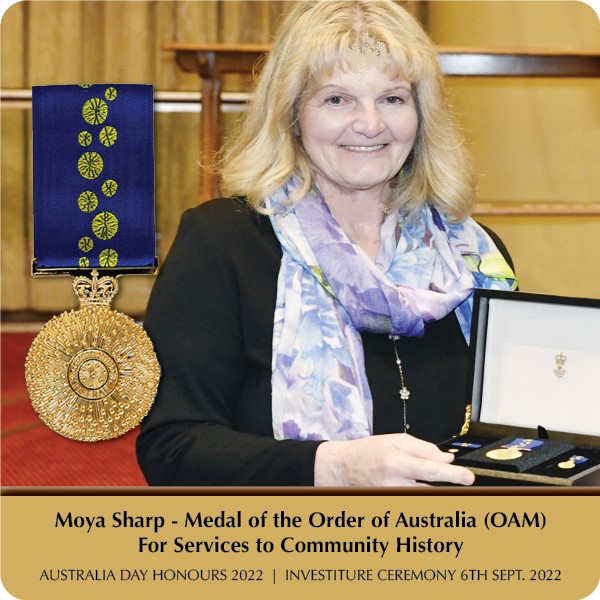- Aboriginal History
- Cemeteries
- Hospitals
- Hotels
- Maps of the Goldfields
- Military
- Miners
- Miscellaneous
- People
- Places on the Goldfields
- Place Index A-Z
This website is dedicated to the memory of my two dear friends Sandy Duncan and Shyama Peebles who both passed away in 2012.
Barrambi > Barrambi About
Barrambie, is located 116 km southeast of Meekatharra and 75 km northwest of Sandstone.
.jpg)
Bonzle Map showing location of Barrambie
Of all the small satellite towns surrounding Sandstone, Barrambie was the one that has had, right up to the present time, the most constant stream of prospectors and miners working the shows in that vicinity. In June of 1905, there was a report of a new find at Barrambie, a new field approximately 40 miles south of Sandstone and about 80 miles east of Cue. This new field was to use Cue as its centre for the first seven years of its existence and was included in the Murchison Goldfields when Sandstone was still included in the Coolgardie Goldfields.
The town may also be to blame for a plague of rabbits infesting the state. These had been released in Victoria and quickly bred to plague proportions, eating everything in its path as it moved across Australia. In an attempt to protect Western Australia from the onslaught a rabbit-proof fence was built. A fence worker digging a post-hole between the 283 and 284 mile posts on the fence at Barrambie, discovered gold, and virtually all the workers abandoned the project to prospect. The fence was eventually completed and the shanty town of Barrambie grew next to it. Residents would leave the gates open so rabbits could be more easily gathered on the Western Australian side for food. It was all the invitation the vermin needed and the rest of southern Western Australia was infested with pests, which are still an environmental problem in the country to this day.
Before very long, a hotel was started up, which was run by Dolly Wilson, and there was soon other business serving the population's needs. One of the first leases at Barrambie was the Golden Treasure lease, which was sold to a Victorian syndicate for £5,000 in September of 1905. The main shaft of the Golden Treasure Mine was reported to be down 150 feet in 1906, which made it a mine of some substance.
In Feb of 1906 the following report was featured in the annual periodical ‘The Golden West’
‘Barrambie was the most important find made during the year (1905) on the Murchison field. The field is 80 miles east of Cue and there is a lot of prospecting going on. Some specimens brought from the centre were exceptionally rich. The reef can be traced for many miles, running North and South. Nearby, at Erroll’s, another new discovery and 12 miles from Barrambie, several leases have been taken up.’
By December of 1906, it was reported that there were thirty men at Barrambie, a field said to be living on ‘the output of the dolly pot’ as at that time there was no other way for them to get their gold from the rock. A ten-head stamp battery was erected by the Barrambie Range Gold Mine which made it much easier for the prospectors, as up until that time, the nearest battery was at Cue, some 80 miles away.
The Barrambie townsite had developed as the mines were opened up, it was a collection of shanties. The general impression from various newspaper articles is that Barrambie was the 'wild' in the wild west. In 1907 there was an attempted murder of a miner. The underground mine manager at Barrambie Range Mine in 1908 was accused of attacking an employee breaking his shoulder and two ribs. The same year a miner died in the Nannine hospital after being attacked in the town.
A hotel was opened at Barrambie in January 1907 but closed a year later. In a bankruptcy hearing, the proprietor described Barrambie as a very rough place with the hotel at times resembling a lunatic asylum. There was also a lot of sly grog being sold and drunken mobs would at times take over the hotel smashing furniture.
Half the men were replaced each pay day at the Barrambie Range Mine as they were drunk and not turning up for work.
In 1907 several people were convicted of selling sly grog in the town, the convictions coming as the result of an informant. A lynch mob was organised. Under police escort, a lady named Florodora accused of selling alcohol was the first to reach him. A newspaper report states:
The irate lady gave striking evidence of her antipathy to the informer per medium of an umbrella and stones.
In this, she was joined by (the appropriately named) Mrs. Savage who lent vigorous assistance'. Outside court later it continued, prodding him vigorously on the ribs with their serviceable brollys, varying the fun by occasionally whacking him on the head and other parts of his anatomy.' Florodora was locked up and went to jail. Her shanty was set alight and burnt down while she was in jail.
In 1908 the mine was taken over by Messrs Sanderson, Buss, Hopkins & Co. Records for the mine show that between November 1907 and January 1908, less than three months, they had recovered 2199 ounces of gold from 1931 tons of ore. The battery was to operate until August 1911 when it was put up for sale. From then on all ore had to be carted to Cue at a cost of £5 per ton. However, in 1912, a road was constructed between Barrambie and Waukenjerrie and then connected to Sandstone. By the end of that year, the residents of Barrambie had requested a bi-weekly mail service.
From the 1st January 1913, it was announced that Barrambie would now be included in the East Murchison Goldfield instead of the Murchison Goldfield as it had before. This would enable prospectors to lodge their claims with the Registrar at Sandstone.
Paddy Lawler, who in 1912 was an old man and who the town of Lawlers was named after, lived and prospected in the area. He was ill during this year and spent some time in the Sandstone Hospital.
Bill Bennett was a cabinet maker before coming to the Sandstone area and he used the local mulga wood to make beautiful trinket boxes. He would cure the wood in the caves at the Breakaway at Barrambie. One day while pitching his camp he found a cache of rich gold specimens hidden in the trunk of a hollow Gidgee tree, no doubt hidden by someone in years past. Gold stealing was commonplace among the Barrambie GM employees and it was thought that whoever had hidden the gold had either forgotten where he had put it or he had come to a sticky end before he could reclaim it.
Vin Atkinson spent most of his adult life in the Sandstone area where he was a prospector, miner, mine owner, and station owner/grazier (Barrambie Station). He was however to become famous, when in 1914, at the age of 10 yrs he committed an act of extreme bravery which attracted the notice of the nation. here is his story:-
| Return to Barrambi | Next Record Barrambi Cemetery |










